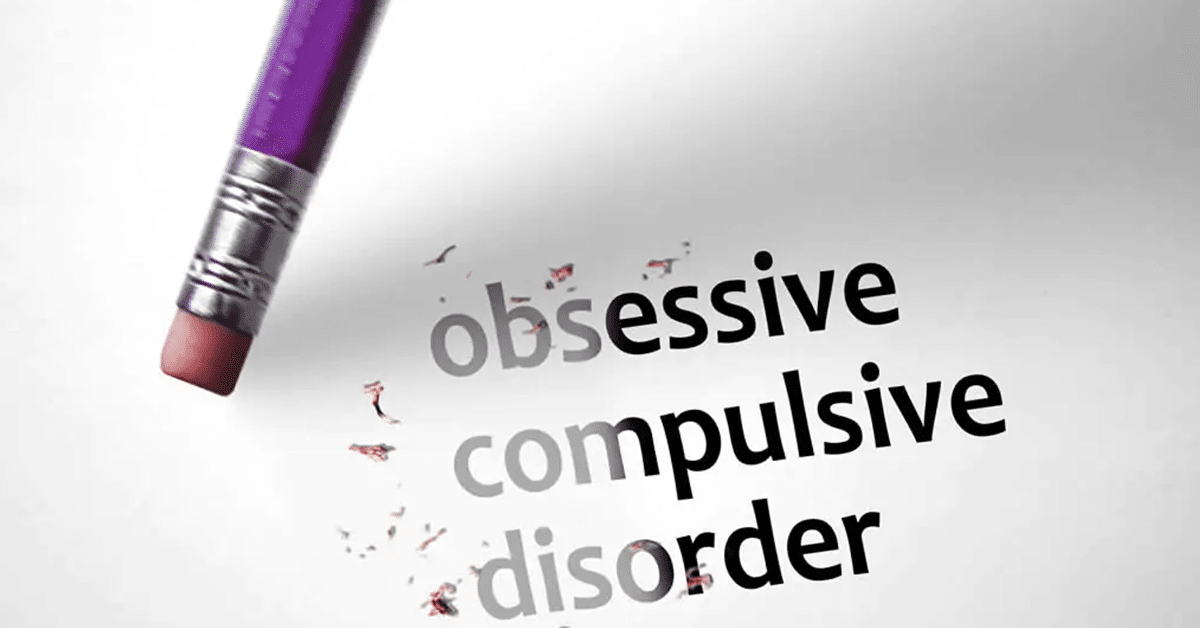A human being is spirit. But what is spirit? Spirit is the self. But what is the self? The self is a relation that relates itself to itself or is the relation’s relating itself to itself in the relation; the self is not the relation but is the relation’s relating itself to itself. A human being is a synthesis of the infinite and the finite, of the temporal and the eternal, of freedom and necessity, in short, a synthesis. A synthesis is a relation between two. Considered in this way, a human being is still not a self.
Søren Kierkegaard, Sickness Unto Death
I wish I had taken the confusing nature of Kierkegaard’s text more seriously, wrestling with the convoluted and confusing words in an effort to appreciate the complexity of a human relationality and its impact upon a self. If I had, I might have had greater insight into the work I did with people trying to make sense of an abusive relationship. Indeed, there are several important insights that can be gleaned from Kierkegaard’s cryptic paragraph. First, the self is a focal point where the complexities of life congeal if only for a moment. This has some important implications: The self—whatever it is—is a work in progress; it is never complete and its “coming-to-be” is never finished. Put in this way, the “self” is not a “thing,” but is a constantly reacting focus that embraces and sifts through life experiences. As such, it is in a perpetual state of “not-knowing,” that easily grounds itself in belief nurtured by hope. Philosophically, this is a disastrous combination; existentially, it is the nature of life. Therefore, Kierkegaard asserts that human beings are a self, but the self, because it is such a difficult thing to pin down, is a spirit.
The second thing we take from Kierkegaard’s statement is that the stuff from which human beings are formed is at one time both illusory and elusive. Indeed, the term “self” is a handy way of referring to a person without getting bogged down in this apparitional phenomenon. The term “self” too often finds its meaning in its use-value. We use it out of convenience, but seldom do we analyze what if anything stands behind the term. This is problematic since the usefulness of the term is too often transferred to a person with the force of reducing relationality to transactional utility. I do for you only if you do for me. Finally, the error of this sort of transactionalism is a violation of the coming-to-be of that which is truly human. It reduces the synthesis of which Kierkegaard speaks to something it cannot bear for it freezes the free flow of human experience in a controlled and controlling instance of photographic trickery, a slight of hand seeking to truncate the synthesis by emphasizing only the finite.
The words of Kierkegaard, then, provide us with a somewhat obscure roadmap that if meditated upon at length will help us understand the nature of the self and the role it plays in relationality. This map will also, if followed, help us avoid abusive relationships. In what is to follow, I wish to use Kierkegaard’s map to examine more fully abusive relationships, how to avoid them and what can be done if a person finds themselves in the midst of such a relationship.
There are several important aspects of “self-talk” we need to emphasize before speaking of abusive relationships. First, as I noted above, the term “self” is a term of convenience. To get at this, it is helpful to distinguish between self, on the one hand, and identity on the other. Self is a convenient term because it is shorthand for our identity. Identity is an abstract process of packaging together the life experiences that seem to be important to who we are. Sometimes these are positive, sometimes they are negative, but our notion of who we are now is dependent upon important past experiences and our dreams for the future. To suggest, then, that identity is something permanent is erroneous for it change with life experiences, but as these experiences pile up, the identity they define becomes an important factor in the choices we make. As a person who is interested and has taught philosophy as well as a person who is interested in and has taught marriage and family therapy, my curiosities are shaped by the passion that motivates me in pursuing greater knowledge in these areas. It not only influences the things I read, but in many ways affects the friends I have and the person with whom I have entered a committed relationship. The interests I have in these two areas form trajectories along which my life develops thereby forming a large part of my identity. My “self” is an abstraction that points to these trajectories and that identity without getting bogged down in all the details.
Second, while it may make sense to say that I am now the same “Harold” I was when I was three, the association is based upon the historical trajectories or narratives that have become my identity. Frankly, I am not the same person; I have changed considerably and the idea that the three-year old Harold is the same as the present Harold is simply illusory. The narrative provides continuity but the idea that the two are the same person is deceptive. This is important because life experiences and especially traumatic life experiences can disrupt the narratological flow of identity thereby introducing what Freud called “neurosis,” a situation that causes the trajectory of identity to splinter. Our identity then becomes ambivalent at best and ambiguous at worse. We will talk about this in greater detail later, but for now it should be sufficient to note that narratological identity is problematized by traumatic experiences.
Finally, Alfred North Whitehead framed a helpful idea. Whitehead wrote of the “fallacy of misplaced concreteness.” Simply put, Whitehead was referring to the tendency to make that which is abstract appear as if it were tangible, or concrete. “Self” is often an example of this fallacy. I think Kierkegaard was trying to avoid such a fallacy when he wrote “Spirit is the self.” According to Kierkegaard, human beings are spirit. What does this mean except that the being of being human cannot be exhausted by their physicality? Such a conclusion is supported by searching for the meaning of “spirit” on the Internet. Here, we find that spirit is “those qualities regarded as forming the definitive or typical elements in the character of a person, nation, or group or in the thought and attitudes of a particular period” (Bing Dictionary, accessed 12/09/2021). Hence the spirit of being human is reference to the narratological flow that manifests itself in one’s identity, a manifestation that is constantly modifying itself with the flow of time while maintaining continuity by stringing together the many foci that the moments of life bring. These moments are stored in memory and the hope we have for the future is fleshed out through the work of imagination. We hope for X because we remember Y and the two become more and more plausible or implausible based upon the foci of experience. This process of memory, hope and experiential foci is the substance of identity and that for which “self” is a convenient shorthand. In this self, as Kierkegaard suggests, is “spirit.”
What does all of this have to do with an abusive relationship? Abuse, in this case, is the unabashed exercise of power that undermines and destroys the infinite/finite polarity referenced by Kierkegaard by disrupting this polarity in favor of the finitude of human existence thereby trapping the abused in what Kierkegaard later calls “the despair of the finite.” Put differently, abuse attempts to restrain its victim by limiting choices not only existentially, but also by a redefinition of narratological trajectories resulting in an identity bereft of imagination and hope, and incapable of transcending the immediacy of the abuse. This exploits the most egregious notions of transactionalism by reducing the abused to a principle of utility manifest in differing “blame statements” meant to exonerate the abusive displays of power and, in a subtle sleight of hand, making the abused responsible for the abuser’s abuse. The abuser has achieved a sadistic victory when the abused wonders “Did I do something wrong, and if so, how do I change the offensive behavior to make the abuser happy?” To think that the abused has the power to stop the abuser by changing behaviors is illusory. In such situations, the abused will never find their power for the thought that the abused controls the abuser’s happiness is a tool used by the abuser to rob the abused of their identity–their life experiences—creating an environment that allows the abuser to perpetuate the abuse. The context of abuse has the effect of creating a cognitive dissonance in the abused because the abused begins to question their own identity even to the point of questioning their life experiences (maybe my parents didn’t love me; maybe X is right, and they are just trying to turn me against X). When the abused questions their life experiences long enough, a process validated by the abuser, the focus of the abused is changed thereby changing their narratological identity from one of independence to dependence and transforming love into need. In this instance, imagination and hope are emptied of their power because they are now grounded in the impossible…the illusory thought that the abused is responsible for the abuser’s abuse. Through a sadistic act of trickery, the abused substitutes transactional relationality for the reality of love and in this, the spirit of the abused is threatened with death, a death that opens the abused to further abuse.
What, then, can we say of such relationships? Does the abused find themselves in a truly hopeless situation? The answer to this is “no,” but the path back to normalcy is a difficult one of discovery and practice wherein the abused finds the true source of their power.
No matter what, it is difficult for people to admit they have been tricked and it is tremendously difficult when the one tricking them is supposed to be the one who loves them. The way out of this horror is to recover the infinite side of the finite/infinite polarity completely ransacked by the abuser. In such a recovery, the subject of the abused is healed so that identity can once again entertain memory, hope and imagination grounded in possibilities of change rather than the impossibility of stopping the abuse. This means that the abused must redefine their focal points for self-identity not only in the immediacy of the abuse, but by redefining their narratological identity as well. This is facilitated by recognizing the infinite in each narratological and existentially finite moment that has held them captive.
Such a discovery happens in what Kierkegaard calls a “leap of faith.” In this case, the leap is found in the power to say “no.” The power of “no” is discovered in the limits and boundaries it defines. It is a power that redefines the finite in light of the infinite thereby reestablishing the finite/infinite dialectic in narratological identity. This is no easy task but is made possible by grounding imagination in this dialectical process rather than the narrative formed by the abuser. The power of no, as is so often the case, is found in the power of choice, a choice that becomes apparent when the reality of one’s finitude is energized by the possibilities of the infinite. This is not something that can be done for the abused, but helpers can guide them into self-discovery so that a choice becomes possible. The path of self-discovery is long because the difficulty of imagining change is directly proportionate to the severity and longevity of abuse. The finite/infinite dialectic is continually tempted with the finitude of the abuse narrative, a temptation made more difficult by interruptions of the healing process by the abuser. Again, with a slight of hand, the abuser confuses the process of healing with a confession of love, but such confessions are likely trickery grounded in blame statements perpetuating the abuse cycle. Change based upon trickery is substituted for the change of healing. The trickery continues.
Often the result of such temptations is a relapse much like addicts when addicts turn from their recovery and once again embrace their drug. When relapse occurs, shame empties their power by limiting their ability to say “no” resulting once again in the destruction of the finite/infinite dialectic, a destruction made complete by the abuser’s “I told you so,” a statement that tempts the abused to embrace a narrative known only for its finitude. At this point, a therapist or a friend may try to warn the abused not to buy in to the abuser’s narrative hoping to prevent the relapse, but all too often the abused tries to take refuge in the horror of their truncated narrative, a narrative the abused wrongly believes is love.
Therapists and/or friends need to recognize the complexity of this process and the difference between the power of abuse and the power of the abused to say “no” as well as the meaning this has for narratological identity. It is in this complexity that the secret of a healing relationship resides. Such a relationship is grounded in an authentically nonjudgmental posture as opposed to smug epistemological platitudes meant to hide judgments in the smokescreen of knowledge or worse, belief. Nonjudgmental relationships are ones where the narratological identities of the friend/therapist and the abused intermingle empowering the imagination to untangle the illusory promises of change by the abuser with the real possibility of change brought through healing. When the infinite once again balances the finite, the process of healing can begin.
To have one’s existence defined by abuse is a denial of spirit. Abuse steals the power of the abused and redefines their narrative so that they think themselves responsible for the behaviors of the abuser and their happiness. When this “responsibility narrative” becomes the abused’ s narrative, they are caught in an endless cycle of dependency they mistakenly call “love.” It is not. This type of “love” is simply an illusion and the person the abused thinks they love (the “good” inside the abuser) is a façade. The good person—the non-abusive person—does not exist. Just as the abuser traps their victim in a finite narrative, so also the abuser is caught in a finite idea of relationality. Their relationships are defined by their desire to maintain their power that is sustained by a transactionalism that reduces the relationship to a use value. This is as true of people outside their intimate relationship as much as it is to the one inside the intimate relationship. They use others through tactics of manipulation and isolation to convince the abuser that their abuse narrative is true. Others often think the abuser as a “nice person” while encouraging the abused to stay in the relationship of abuse. The abused is then isolated physically from those who disagree with the abuser and just as importantly from any idea that the abuser is at fault not the abused. The abuser refuses to engage in spirituality as it is defined here because to do so would end the abuse. While this is a possibility, it is highly unlikely. for as long as the abused lives in the abusive relationship, the abused will be “in love” with a façade perpetuated by the emotionally unstable persona of the abuser.
Such is the life of the abused. The abused lives a life of dependency validated and sustained by the abuser’s manipulation and the cycle of abuse that establishes an abusive narrative for the abused. While it is possible for the abuser to change, it means that the abuser would have to embrace a spiritual life, which is highly unlikely. However, healing is possible for the abused. They can recover their spirit through a leap of faith that says “no” to the abuser thereby empowering them to leave the relationship and recover the richness brought through the dialectical play of the finite and infinite polarity of the narratological self. This is not an easy process. It is filled with emotional uncertainty, but it can be done. The abused can find a new focus that produces a new dream and with it, hope. It is a dream of independence rather than dependence, one that pulls them from their abusive relationship to a façade and empowers them to truly find love.
Keep Reading
Want more? Here are some other blog posts you might be interested in.







